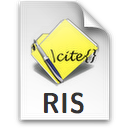

| ORIGINAL
ARTICLE |
 |
 |
Background: The
phytochemical components are extremely important to facilitate the
search for the particular effectiveness of the plant in medicine.
Identification of the chemical nature of phytochemical compounds
present in medicinal plants will provide information about the various
functional groups responsible for its medicinal properties. Thus, the
need to investigate the phytochemicals from various plants has been
exponentially increasing. Cardiospermum halicacabum
L. is one of the most important medicinal plants belonging to the
Sapindaceae family. This investigation was administered to study
phytochemical and FT-IR analysis of a various solvent extracts of Cardiospermum halicacabum L. leaves.
Results: The preliminary phytochemical analysis of Cardiospermum
halicacabum L. leaves extract revealed the presence of carbohydrates,
glycosides, alkaloids, phytosterol, fixed oils, saponins, proteins, and
amino acids, phenolic compounds, flavonoids, and tannins. As a result,
the phytochemical analysis of aqueous extracts revealed the presence of
more phyto components followed by petroleum ether, and chloroform
extracts. FT-IR spectroscopy confirmed the existence of various
chemical components such as alcohol, alkanes, aromatic compound,
carboxylic acid, aldehydes, alkenes, amides, nitro compounds and alkyl
halides in the leaves extract of C. halicacabum L. The functional
groups observed in the various extracts probably indicate the presence
of carbohydrates, glycosides, alkaloids, amino acids, phenols,
flavonoids, tannins, and saponins. The results obtained from FTIR
analysis are significant with the preliminary qualitative analysis.
Conclusions: Extractions of any crude drug with a certain
solvent result in a solution that contains various phyto-components.
The composition of these phyto-components in the respective solvent
provides initial information about the quality of a drug sample. The
presence or absence of a certain component plays an important role in
the decision about the medicinal properties of the plant. As a result,
the phytochemical analysis of aqueous extracts revealed the presence of
more phyto-components followed by petroleum ether, and chloroform
extracts which can be beneficial in a therapeutic approach.

